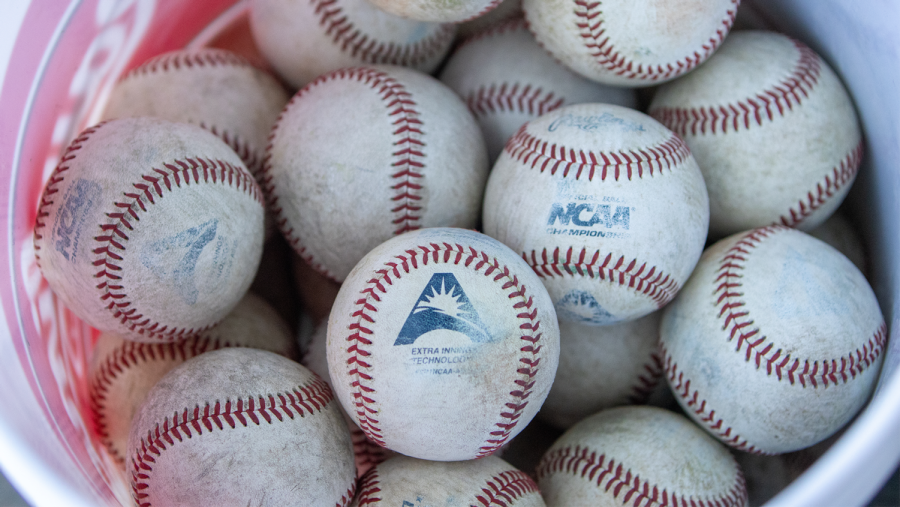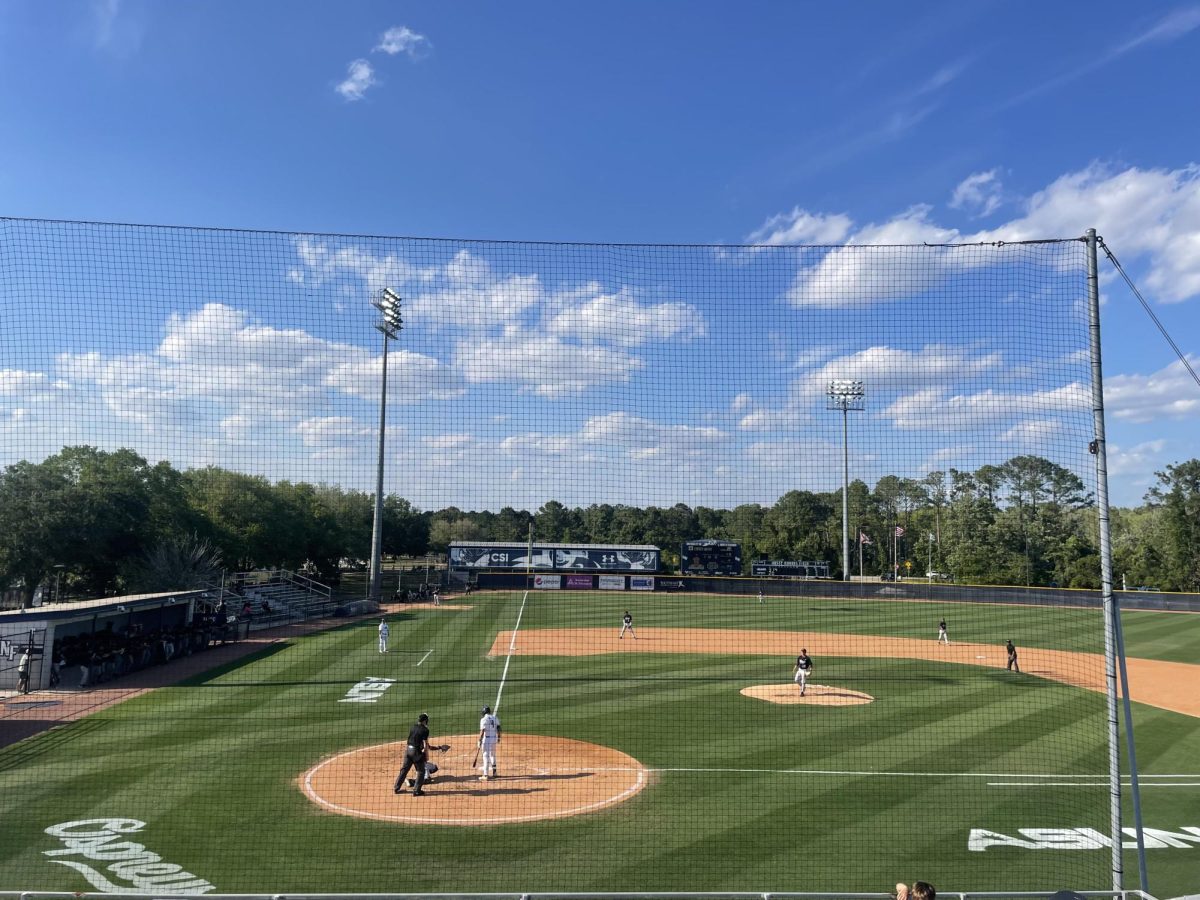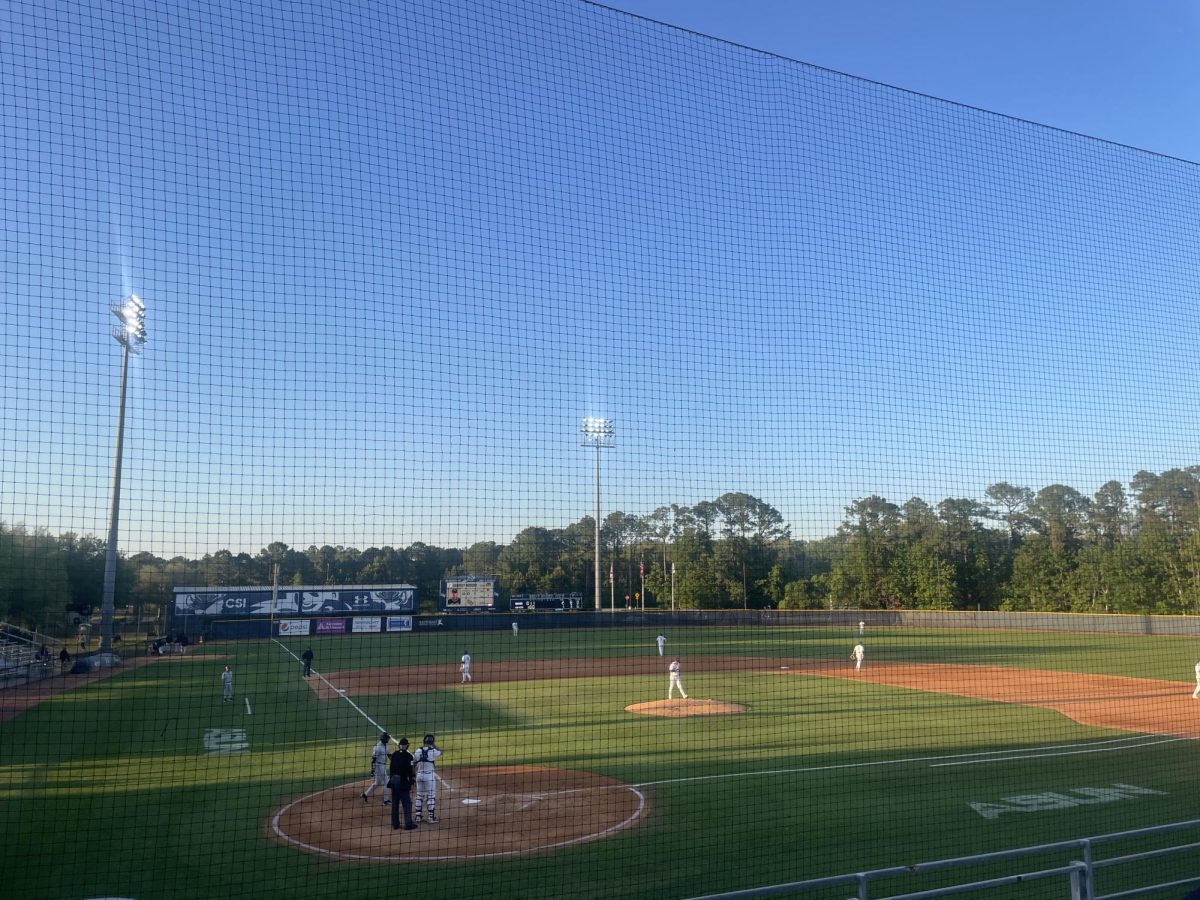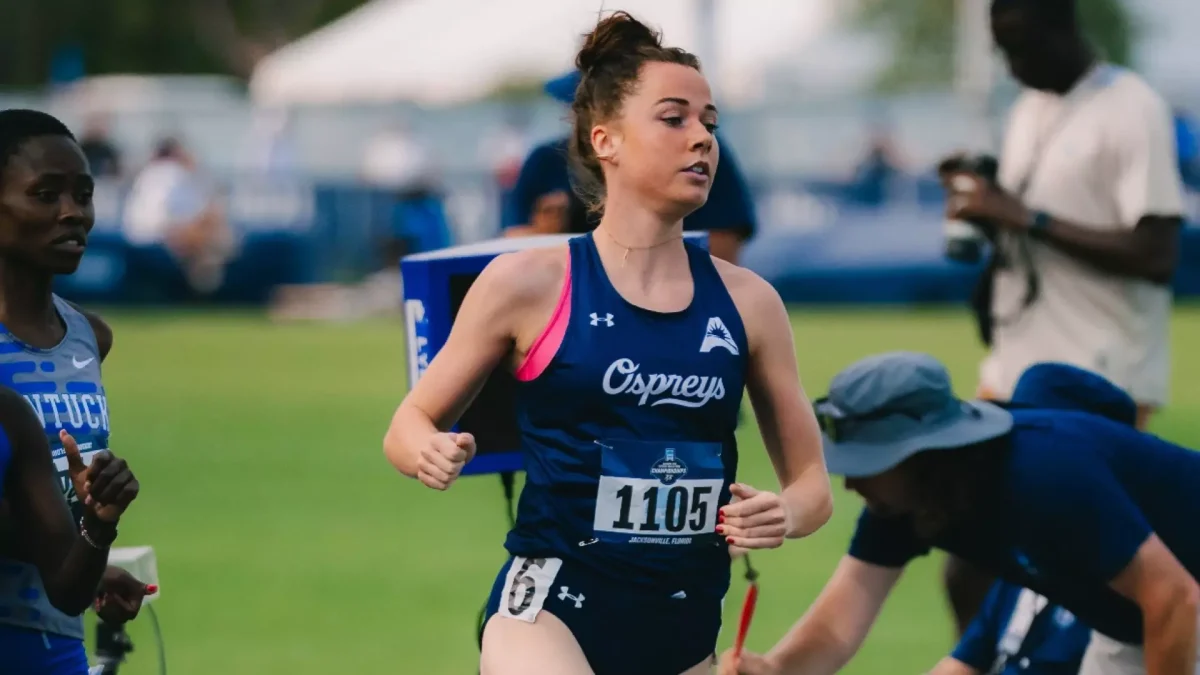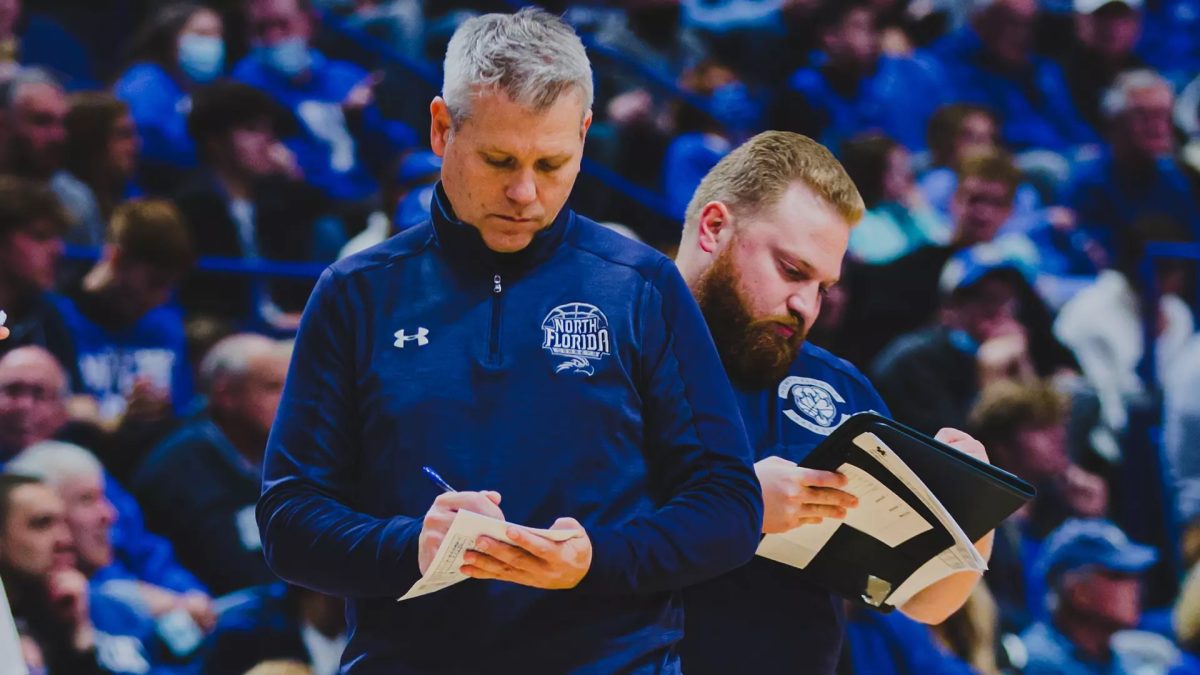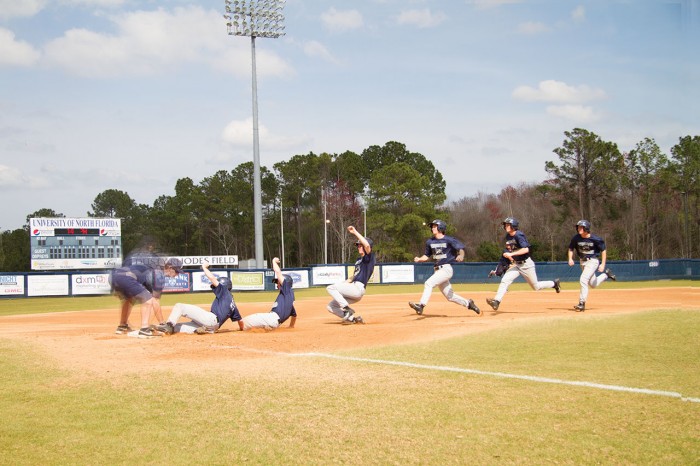
Photo by Randy Rataj
Garrick Ferguson, UNF baseball player, demonstrates the science behind the slides.
Frame 1 — While still moving at top speed, Ferguson must decide at this moment which type of slide will best fit this situation, feet-first or head-first.
Frame 2 — Once the decision to slide feet-first is made, he now knows that he must start his slide between five to eight feet from the base. He knows he has time for one more full stride and takes it.
Frame 3 — Ferguson now decides where to aim his slide. Which side to slide on is determined by where the ball is being thrown from. A ball thrown from left field to third base would mean he’d want to slide as far to the left of the base as possible. A slide to the right side of the bag would be used when trying to steal third and the ball is being thrown by the catcher or the first basemen. If he aims correctly, it will give him an extra split-second before the third basemen can catch the ball and tag him out.
Frame 4 — He has taken his final stride and has begun to decelerate. The deceleration occurs because his center of gravity is falling backwards when sliding feet-first. If he chose to slide headfirst into the base, his center of gravity would have continued its forward momentum and gotten him to the base in slightly less time. The actual sliding is still a frame away, but the movements that get him to the ground have begun. Ferguson begins to lower his body to the ground by squatting, and he has started to tuck his right leg underneath his left to form the number “4” with his legs in anticipation of sliding across the ground.
Frame 5 — The actual sliding begins. Ferguson makes contact with the ground three to five feet from the base. This allows his body to stay under any errant throws or high swipes of the glove from the player covering the base. It’s important for him to keep his leading heal raised above the ground while sliding. If one of the spikes on his cleat was to get caught in the ground and prevent his foot from continuing forward, it could cause a serious foot or ankle injury.
Frame 6 — Safe! His left leg bends at the knee to absorb the impact of stopping the slide. His hand was raised above his head throughout the entire slide to maintain good balance, and by aiming to the left of the base, he was able to avoid the tag from the fielder and make it safely to third base.
Click here to see the kinetics of dunking.



